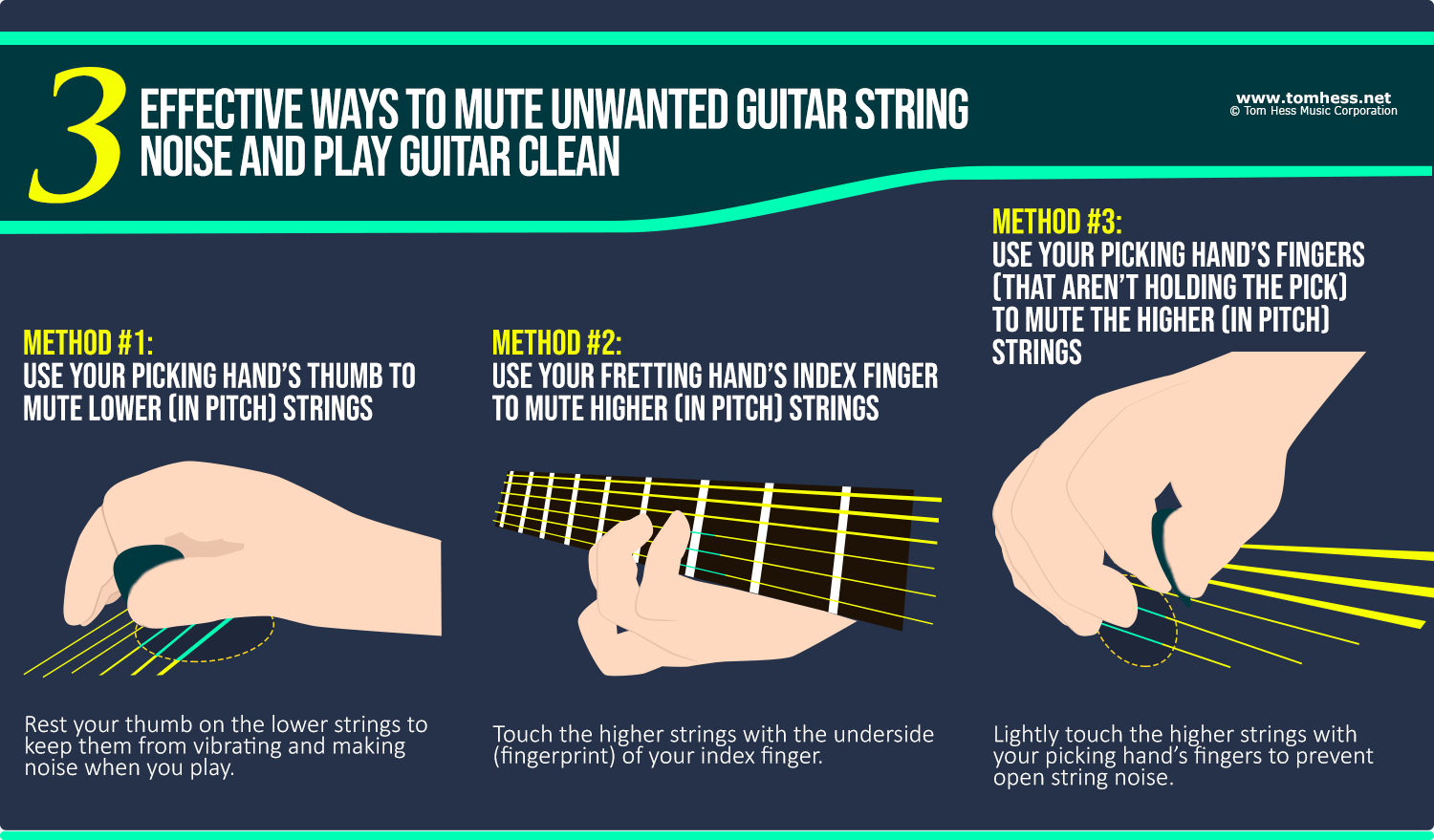Learn How To Solo On Guitar Like A Pro – Lead Guitar Lesson
Emotion To Any Guitar Lick

EMAIL TO GET ACCESS
By submitting your info, you agree to send it to Tom Hess Music Corporation who will process and use it according to their privacy policy.
In this lead guitar lesson on how to play lead guitar like a pro...
... I’ll help you learn to play pro-level guitar licks (and guitar solos) with kick-butt phrasing (even if you’re not an advanced guitar player yet).
You see...
... your favorite lead guitar players (the ones who play the incredible guitar licks and guitar solos that made ‘you’ want to learn to solo on guitar) weren’t born with their awesome skills.
They had to learn and practice the skills needed to play lead guitar like a pro.
But what did they practice?
And how?
Well, that’s the process I’ll walk you through in this guitar phrasing article.
Emotion To Any Guitar Lick

EMAIL TO GET ACCESS
By submitting your info, you agree to send it to Tom Hess Music Corporation who will process and use it according to their privacy policy.
Simply grab your guitar, follow along with the lead guitar examples...
... and by the end, I daresay you’ll be impressing yourself with the sounds coming out of your amp.
Ready to begin?
Let's get started training with this lead guitar play-along video on how to play awesome guitar licks:
Here are 5 more tips on how to improve your lead guitar phrasing and play lead guitar like a pro:
Lead Guitar Phrasing Tip #1: Refine The Vibrato In Your Guitar Licks And Guitar Solos
Vibrato is the single most important skill that makes or breaks your ability to play lead guitar like a pro. (It’s also one of the most important building blocks of your lead guitar style.)
How do you practice this part of your lead guitar phrasing?
Vibrato is a series of rhythmic bends applied to a note during your lead guitar licks and guitar solos. It has 2 parts:
1. The speed of the pulses during the vibrato.
2. The width of the pulses of the vibrato.
And here are the guidelines to remember when it comes to lead guitar vibrato:
The faster the vibrato is, the wider it ought to be to sound truly great (and for you to play lead guitar like a pro with great guitar phrasing).
The slower the vibrato is, the narrower it should (generally) be to sound great during your guitar licks and guitar solos.
The problem with fast and narrow vibrato is that it makes your lead guitar playing sound nervous and out of control.
And the problem with slow and wide vibrato?
It makes your vibrato sound like slow lead guitar string bends vs. ‘vibrato’.
Here is how to practice vibrato the right way:
As you practice your lead guitar vibrato, also remember to keep it in tune!
What does that mean?
To keep your vibrato in tune during your guitar licks, you need to bend the string the same distance during every pulse...
... and the release the string all the way back to the original pitch.
Without this, your lead guitar vibrato (and the entire guitar lick you are trying to play) will sound out of tune.... which is the opposite of what it means to play lead guitar like a pro.
Question: “Tom Hess, how can I make sure I'm doing vibrato in tune when I practice my lead guitar phrasing?”
Answer: When practicing vibrato is new to you, record yourself and listen back to the recording of your vibrato guitar phrasing at half speed. That will make it much easier to hear if your vibrato is in tune (or not) and make adjustments that help you refine your guitar phrasing and learn to play lead guitar like a pro.
Lead Guitar Phrasing Tip #2: Practice Advanced String Bends
“String bends”, you say? Those are the EASIEST part of lead guitar phrasing! It’s something I’ve learned in my first 2 weeks of playing.
Yeah, that’s what everyone thinks.
But wait until you try the advanced string bending variations you can use to solo on guitar, such as:
2.5 step lead guitar bends, sliding bend chains, half-ghosted guitar string bends or re-articulation bends.
Check out this video on the topic of how to solo on guitar where I’ll show you these (and other) lead guitar bending variations that will help you play lead guitar like a pro:
And what are re-articulation lead guitar bends?
Those are simply yet another way to bend strings when you solo on guitar. To do them, play the note you want to play in your guitar lick and then immediately bend into it.
Like this: Imagine you’re playing a solo on guitar and you want to play the 9th fret on the G string during your guitar lick. You would play that note first. Then, immediately bend into it from the 7th fret on the guitar.
This rearticulates the 9th fret with a lead guitar string bend. (Hence the name – rearticulation bend.)
Rearticulation bends are not only a cool lead guitar phrasing trick that helps you play lead guitar like a pro...
... they also help you make your string bends stay in tune when you solo on guitar.
Here are a few more sting bending tips that’ll improve your guitar phrasing:
- if you have a hard time bending strings up to pitch when you solo on guitar, detune your guitar by a whole step (or use lighter gauge strings). As your string bending lead guitar technique improves, work back up to standard tuning.
- bend string by 1/2 step (one fret) as you get comfortable playing lead guitar string bends. As your technique improves, start using more whole-step string bends in your guitar phrasing when you solo on guitar.
- similar to refining your lead guitar vibrato, record your lead guitar licks and listen to the accuracy of your string bends away from the guitar. That will help you to spot your guitar phrasing flaws and fix them more easily.
Lead Guitar Phrasing Tip #3: Control String Noise In Your Guitar Licks When You Solo On Guitar
To play lead guitar like a pro, you need to control the noise from the strings you don't want to hear when you solo on guitar.
The most common causes of noise in lead guitar (that get in the way of your ability to play lead guitar like a pro) are:
- string noise from the higher (in pitch... aka: thinner) strings. It happens very often when you are playing scales and scale sequences while you solo on guitar.
- string noise from the lower (in pitch... aka: thicker) strings. It happens very often when you are playing guitar string bends, such as lead guitar vibrato and string bends.
- string noise from the strings ringing together. It happens very often when you are playing some types of scale sequences and arpeggios (especially with distortion).
Here is how to clean up this string noise and play lead guitar like a pro:
To clean up the noise from the higher strings, use the index finger of your fretting hand to rest on the thinner strings and keep them from ringing.
And as for the lower (thicker) strings?
Use thumb muting. Just like it sounds, your picking hand’s thumb should rest on the thicker strings when you solo on guitar.
Then, as you play your guitar licks during your guitar solos, slide the thumb up and down the strings to keep the lower ones free from string noise.

And how do you keep the strings from bleeding together?
2 ways:
- focus on releasing the note you just played when your fretting hand finger comes down on the next note.
- practice finger rolling to separate the notes that are played on the same fret across several strings with the same finger.
Here is how to refine this area of your lead guitar phrasing so you can solo on guitar like a pro:
Lead Guitar Phrasing Tip #4: Practice Double Stop Variations
Double stops (2 lead guitar notes played at the same time) are some of the most recognizable sounds in lead guitar (especially in blues and classic rock guitar).
And that is both good and bad news when it comes to your ability to solo on guitar... especially when you play the unison double stop bends (the ones where you are strumming 2 notes and bending the first note into the second one):
 Create Awesome Rock Guitar Licks
Create Awesome Rock Guitar LicksLearn how to make any guitar lick you play sound absolutely amazing.
 How To Quickly Build Guitar Speed
How To Quickly Build Guitar SpeedLearn the secrets to building guitar speed by watching this free video.
 How To Fix Sloppy Guitar Playing
How To Fix Sloppy Guitar PlayingUse this muting technique to clean up your guitar playing right away.
- traditional lead guitar double stops have been used to death in countless lead guitar licks and guitar solos. To the point where when you use ‘traditional’ double stops, you no longer sound pro when you play lead guitar... you should cliché and kind of boring.
- most guitarists don’t even try looking for other double stop ideas (that could help them play lead guitar like a pro). Instead, they keep recycling the same old ideas from guitar solo to guitar solo.
- The very cool lead guitar tension and musical dissonance that begins the traditional blues guitar double stop is quickly resolved as both notes ring in unison after the double stop bend is complete. As a result, the cliché blues double stop lacks the maximum intensity and aggression that it could have (more on this below).
The solution?
You can easily add other notes to the traditional double stops (including – using a barre to add more than one note) to create unexpected and prolonged dissonances.
... as well as adding vibrato to the double stop.
How?
Watch this lead guitar video to see lots of examples:
Lead Guitar Phrasing Tip #5: Learn And Match Your Favorite Guitar Licks And Solo (To Match The Guitar Phrasing).
Try this challenge to make your lead guitar soloing better fast:
Choose 10 guitar licks from your favorite players (or 10 short melodic fragments of your favorite singers).
Make it your goal to learn them and match the phrasing (of the guitarist and/or the singer) as closely as you can. Focus on matching:
- the vibrato (its speed and width).
- the articulation of the notes. For example: were ‘all’ the notes picked? Were some of the notes played using legato (hammer ons and pull offs)? Where there any slides?
- ornaments on the notes. For example: picking hand rakes and harmonics (natural and artificial harmonics).
... and so on.
This may easily take you an hour or more (per guitar lick). But going through this process will improve your lead guitar phrasing and help you play lead guitar like a pro the way few things can.
Question: “Tom Hess, how is copying melodies of singers going to help me solo on guitar and improve my guitar phrasing?”
Answer: Simple: singers cannot sing as fast as guitar players. That means: they have to focus on squeezing maximum emotion from each note they sing. The average singer’s phrasing is far better than that of the average guitar player’s. Copying the nuances of their phrasing will help you not only play lead guitar like a pro, but also develop your own lead guitar style.

Now that you know how to improve your guitar phrasing, the next step is to transform the rest of your guitar playing, so you can finally reach your guitar playing goals and become the guitarist you want to be. I can help you with this in my personalized Breakthrough Guitar Lessons.
Here is how it works:
You tell me everything about your guitar playing strengths, weaknesses, musical background, and musical goals. I then create your personalized guitar lesson strategy. As you practice your lessons, I give you a ton of feedback to help you master your guitar lessons and reach your musical goals.
To begin, click the green “Start Now” button below.

Become the guitarist you want to be with rock and metal guitar lessons online.

